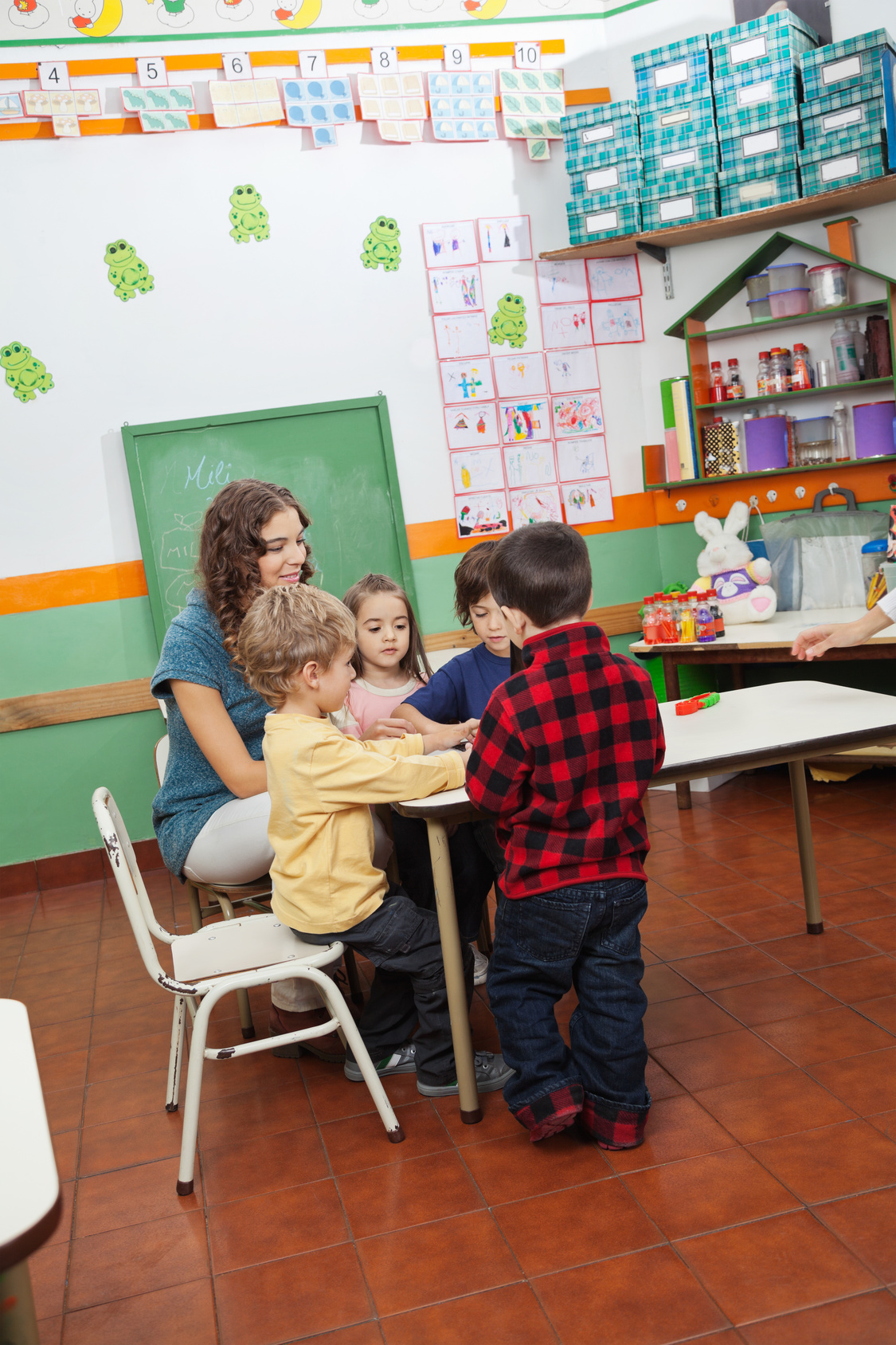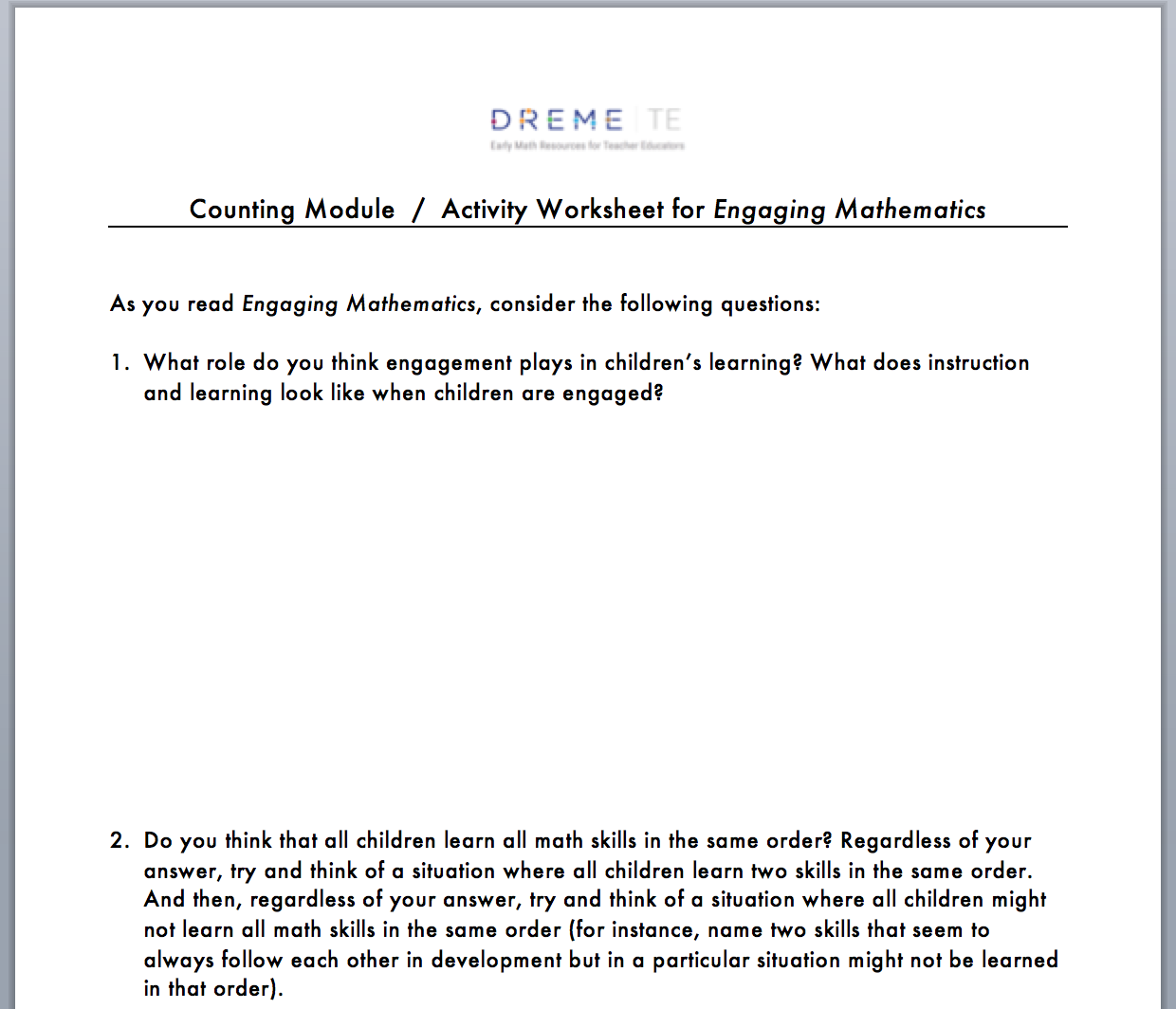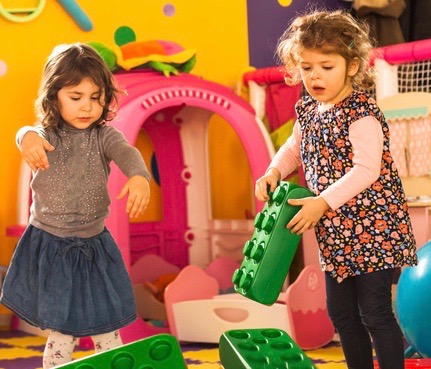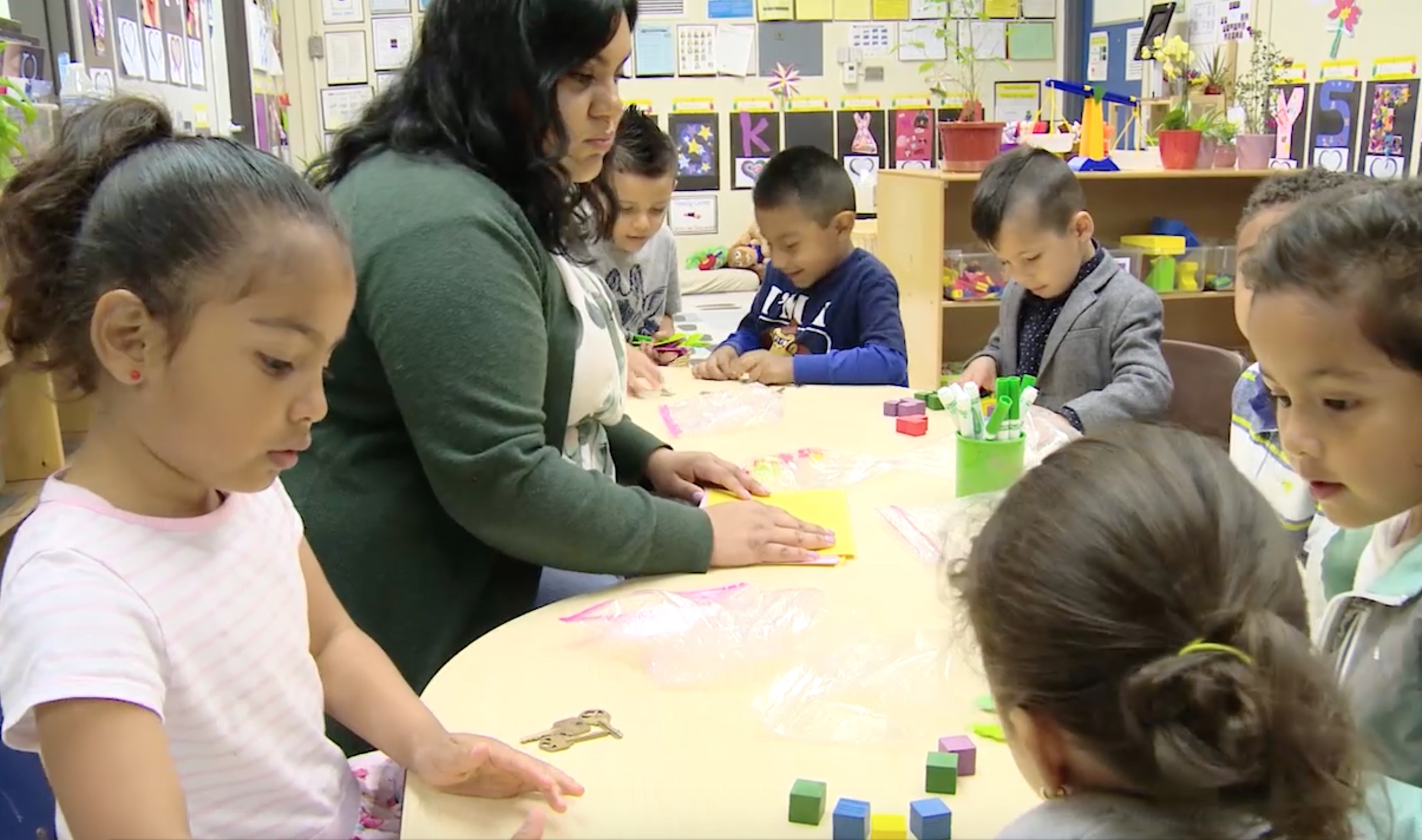This is the story of how Alice and José renewed their commitment to high quality support for mathematics in their classroom, and let go of their need to have complete control over how and when children learn mathematics.
The Story of Alice and Jose
“Math is important, right?” Alice and José had just exited the registration area at the early childhood education conference, and Alice turned to José in exasperation. “Then why don’t we see more sessions on it? There is only one, Engaging Math, and I’m sure it’s a yet another session on using nursery rhymes and songs to support math development. We both know there is so much more to supporting math!”
 Over the past two years, José and Alice had consulted some of the latest research on how children develop specific skills and ensured that their curriculum was organized in the order that children typically develop math skills. Because of their focused instruction, children in their classroom had relatively advanced math skills. They were especially proud that almost all the children could write all of the numerals in order to 100 by the time they went off to kindergarten.
Over the past two years, José and Alice had consulted some of the latest research on how children develop specific skills and ensured that their curriculum was organized in the order that children typically develop math skills. Because of their focused instruction, children in their classroom had relatively advanced math skills. They were especially proud that almost all the children could write all of the numerals in order to 100 by the time they went off to kindergarten.
Lately, however, José and Alice had noticed that their children didn’t seem interested in math activities. They had hoped that this conference would provide some new ideas for motivating their children. They were also perplexed because some children seemed to be following the developmental path described by math researchers, but others seemed to lose skills that they previously had mastered. For instance, Laurent could recognize some of the teen numbers but never seemed to get six or nine right. “What are we doing wrong?” wondered José.
Both José and Alice decided to go to the Engaging Math session, just in case it proved to be helpful in re-engaging those children who now seemed to be least interested in math. When they arrived in the room, there were no blocks, no manipulatives, no brightly colored numbers on sticks in sight.
The beginning of the session started a bit weirdly. Each of the panelists introduced themselves. Surprisingly, all were teachers from different classrooms in the same preschool (not a salesperson among them!). Peter, one of the teachers, dimmed the lights and started a video. The video began with a small boy drawing multicolored circles in his journal. As a teacher walked by, she asked, “Stevie, tell me about your picture.” Stevie answered, “My brother plays soccer. These are the balls that the big man brings. Can you write for me?” The teacher answered, “Sure! What do you want me to write?” Stevie answered, “These are balls for playing.” As the teacher stood up after writing Stevie’s dictation, Stevie asked, “How many balls are there?” The teacher replied, “How many do you think there are?” Stevie counted aloud, “One, two, three, four!” The teacher replied, “Let’s make sure. Can you start again and show me how you counted?"
Stevie counted again, touching each ball as he counted, “One, two, three, four, five!” and then exclaimed, “I wanna write the five! I’m five just like the balls! I had a birthday!” As the video ended, Stevie proceeded to write the numeral 5. Alice leaned over and said to José, “Writing numerals seems too advanced for a child who can’t count correctly!”
The next video began immediately and focused on two girls who were standing in front of a table filled with clear plastic bags filled with objects (pom-poms, miniature dinosaurs, and plastic teddy bears). Both girls were looking the plastic bags over. Finally, one of the girls spoke, “Sammy, we did pom-poms last time, right? How ‘bout if we do the teddy bears this time?” Sammy answered, “No, Cita, too easy! It looks like there are only a bit of teddy bears. How about the bag with erasers? They’re cute!" The girls took the bag of erasers to a table. As Sammy started to count and got up to 18, sliding each eraser off to the side in a pile, Cita interrupted, “Wait! There’s too many erasers! Remember Fives and how we did Fives last time? Let’s try that! That’s faster!”
Alice leaned over to José and whispered, “Counting by fives! Isn’t that a kindergarten skill?” As they continued to watch the video, the girls finished counting (there were 43 erasers divided into eight groups of five and one group of three), Cita pulled over a piece of paper from the middle of the table and started to draw circles, one for each of the groups of five, and added three tally marks to the page. After she finished, she looked at Sammy, “Let’s do the Fives dance!” In unison, Sammy and Cita counted the circles in a singsong voice and with a little swaying stay-in-place dance, “Five, ten, fifteen, twenty, twenty-five, thirty, thirty-five.” They took a deep breath together and shouted, “Forty! Forty-one, forty-two, forty-three. Yay!” as they counted the three tallies on the page. They broke up into laughter. Cita said to Sammy, “My brother says I should learn to count by tens, but I like our Fives dance!”
Alice, looked over at José, astonished. Peter turned the lights back up. “Before I open this up to questions and show more videos, I’d like Connie and Lisl to talk a little bit about how we came to this approach.” Connie approached the microphone, “Before we started this project two years ago, I really wanted to add more math in my classroom. I researched the order in which children learn and what sorts of activities would support that learning. However, the children just didn’t seem interested in my highly planned and structured teaching. I didn’t have worksheets or anything like that, but the kids just seemed bored. I think that the biggest realization that I have come to is that children know a lot about what they can do. And, maybe more importantly, they like challenges. So in the film you just saw, Stevie had learned how to write the numeral 5. I never would have known that. After all, he couldn’t rote-count past nine and he didn’t always count five objects accurately. In the past, I would have never offered Stevie the chance to write a 5 because, in many children, that skill comes much later in development. But Stevie was excited about turning five, which meant that the numeral was important to him. What the video didn’t show was Stevie learning to write the number 15, too. His brother was fifteen and that was important to him. I guess those are my two points, that math is important to children and that they don’t always learn the way you think they will. There will be plenty of time for Stevie to learn the rest of the numerals.”
Lisl, Sammy and Cita’s teacher, went to the microphone next. “Cita and Sammy used to sneak away to the dramatic play area during math time. We had group counting activities where we learned to count higher every week. I had activities assigned to each child according to where I thought he or she was in math. I had puzzles with numerals and sets of objects, all of the activities that we know give children opportunities to engage in math. But it wasn’t working. Then one day, I went to a conference where a presenter talked about the benefits of letting children choose their own math activities. She showed a video of an activity that looked very much like the one that you just saw.
"I decided to try it in my own classroom. Sammy and Cita initially continued to avoid math activities. However, one day in the after-school program they saw one of the first graders do this Fives dance. They were absolutely entranced. They hadn’t learned to count by tens, or even count very high for that matter. But this dance transformed them. They were obsessed by counting by fives, just so they could do the Fives dance. Initially, they struggled a bit to get consistent groups of five. But, later, whenever we put out the activity with the bags of objects to count, they went right to the table, grouped by fives and started the dance.
José raised his hand. “This looks amazing, but we have a responsibility to help our children meet the state standards. The children we work with are at risk of performing poorly in school. How can we be sure that they’ll learn everything they need to?” Peter replied, “We aren’t saying that we randomly put out activities and hope that kids will learn everything that they need to. We are saying that children can make really good choices in their own learning as long as a breadth of carefully chosen interesting activities is offered. With regard to the 'at-risk' part of your question, I like to think of all children deserving and needing rich math experiences, and while I understand what you mean by ‘at-risk,’ I’ve found it really useful to also think of what strengths and interests children have, and to use that knowledge to provide engaging and challenging math activities.”
Alice and José weren’t convinced, but they decided to try the baggy counting activity in their own classroom to see how it would go. While the kids took a few days to get the hang of not being told exactly which math activity to do, and the level of noise in the classroom increased considerably (due to the levels of excitement in the room!), it seemed that it was working. Children were excited about the activity and appeared to be learning how to count objects accurately using a variety of strategies.
Over time, the mathematical interactions that Alice and José had with the children became increasingly rich and engaging in both planned and spontaneous activities, within the classroom and throughout the day.
And that is the story of how Alice and José renewed their commitment to high quality support for mathematics in their classroom, and let go of their need to have complete control over how and when children learn mathematics.



